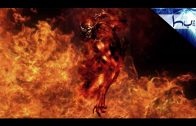THE ART OF SACRED PLAY
Diane Ackerman on DEEP PLAY:
“For humans, play is a refuge from ordinary life, a sanctuary of the mind, where one is exempt from life’s customs, methods, and decrees. Play always has a sacred place—some version of a playground—in which it happens. The hallowed ground is usually outlined, so that it’s clearly set off from the rest of reality. This place may be a classroom, a sports stadium, a stage, a courtroom, a coral reef, a church or temple, a field where people clasp hands in a circle under the new moon. Play has a time limit, which may be an intense but fleeting moment, or the exact span of a psychotherapy or MDMA session.
Sometimes the time limit is prearranged; at other times it’s only recognizable in retrospect.
The world of play favors exuberance, license, abandon. Shenanigans are allowed, strategies can be tried, selves can be revised.
In the self-enclosed world of play, there is no hunger. It is its own goal, which it reaches in a richly satisfying way.
Play has its own etiquette, rituals and ceremonies, its own absolute rules.
As Johan Huizinga notes in Homo Ludens, a classic study of play and culture, play “creates order, is order. Into an imperfect world and into the confusion of life it brings a temporary, limited perfection. The least deviation from it spoils the game.” These are the basic rules of all forms of play. But play also has its own distinctive psychology.
Above all, play requires freedom. One chooses to play. Play’s rules may be enforced, but play is not like life’s other dramas. It happens outside ordinary life, and it requires freedom.
Players like to invent substitute worlds, more advantageous outcomes of events, supplemental versions of reality, other selves.
Make-believe is at the heart of play.
By far the most common use of play words, in many languages, is the erotic. The Sanskrit word for copulation is kridaratnam, which translates as “the jewel of games.” In English, we make a play for, play up to, indulge in love play. Among native Americans of the Blackfoot tribe, the word koani could be applied either to child’s play or to unlawful sex. Words for play mainly gave rise to words used in love play, battle, or religious rites (feast and festival also trace their etymology to play). What do these activities have in common? They all require daring, risk, concentration, a willingness to follow the rules of the game, and a desire for transcendence. They share the spirit of sacred play, where the child and the poet are at home with the savage.
The savage is what we sometimes long to be—living by cunning and raw emotion, attuned to nature, senses alert, eluding danger, thrilled by challenge.
An element of the human saga that has thrilled and fascinated me throughout my life: transcendent play. Not just how children play—rejoicing in the delights of silliness, perfecting their coordination, or rehearsing the rules of courtship and society—but a special dimension of adult play. Something exquisitely human. Of course, adults often play in the same way and for the same reasons that children do; they act silly because it’s fun; they play to socialize, and that can include besting a rival or developing a friendship. But there is a deeper form of play, akin to rapture and ecstasy, that humans relish, even require to feel whole.
Deep play is the ecstatic form of play. In its thrall, all the play elements are visible, but they’re taken to intense and transcendent heights. Thus, deep play should really be classified by mood, not activity. It testifies to how something happens, not what happens. Games don’t guarantee deep play, but some activities are prone to it: art, religion, risk-taking, and some sports—especially those that take place in relatively remote, silent, and floaty environments, such as scuba diving, parachuting, hang gliding, mountain climbing.”
For speaking inquiries: info@ThisIsJasonSilva.com














